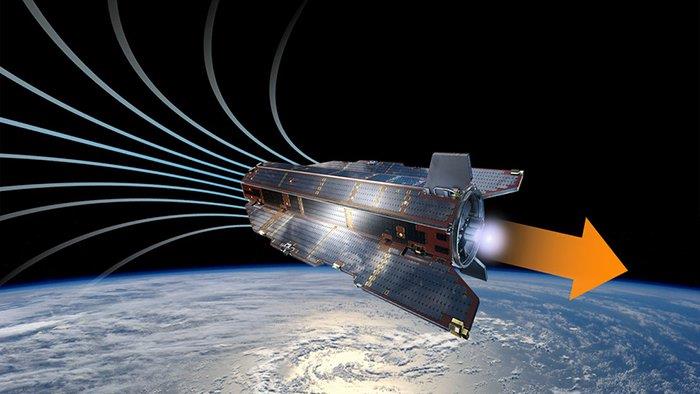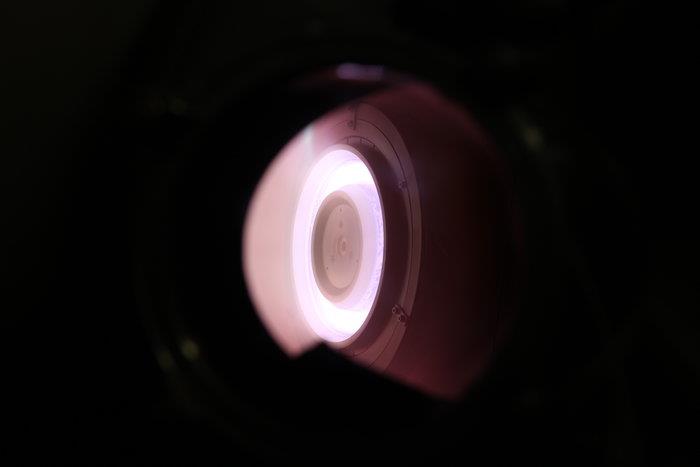The thruster can collect, compress, electrically charge and then release air molecules, removing the need for chemical fuel. All that's needed is electricity, which can be harvested from the Sun.
Louis Walpot, one of the ESA scientists, said: “This result means air-breathing electric propulsion is no longer simply a theory but a tangible, working concept, ready to be developed, to serve one day as the basis of a new class of missions.”
ESA has been busy working on this technology for more than a decade. Its GOCE gravity mapper satellite ran for more than four years using a similar type of thruster, though it also relied on 40kg of xenon as a propellant to keep it going.
 Now the agency has worked out how to use air instead – and while there are no air molecules out in the vacuum of space, enough can be collected at low orbits to give satellites a periodic boost to stop them being pulled back down to Earth.
Now the agency has worked out how to use air instead – and while there are no air molecules out in the vacuum of space, enough can be collected at low orbits to give satellites a periodic boost to stop them being pulled back down to Earth.
Key to working this out was finding a way to collect and compress the scarce air molecules rather than have them simply bounce away. The electrical charge and ionisation is crucial here, providing the acceleration needed.
“The team ran computer simulations on particle behaviour to model all the different intake options,” added Walpot. “But it all came down to this practical test to know if the combined intake and thruster would work together or not.
“Instead of simply measuring the resulting density at the collector to check the intake design, we decided to attach an electric thruster. In this way, we proved that we could indeed collect and compress the air molecules to a level where thruster ignition could take place, and measure the actual thrust.”
 The team set up a test vacuum chamber and thruster in Italy, simulating the environment at an altitude of 124 miles and at a satellite speed of 4.8 miles-per-second.
The team set up a test vacuum chamber and thruster in Italy, simulating the environment at an altitude of 124 miles and at a satellite speed of 4.8 miles-per-second.
With no valves or complex parts, all that is needed is the power to electrically charge the molecules to accelerate and eject them. A two-stage system was designed for more efficient charging.
The rocket thruster was tested with xenon, then a nitrogen-oxygen mixture, then solely with atmospheric air molecules.
The team has more work to do before the system can be fitted to a satellite, but this is solid evidence that such a system is possible.











